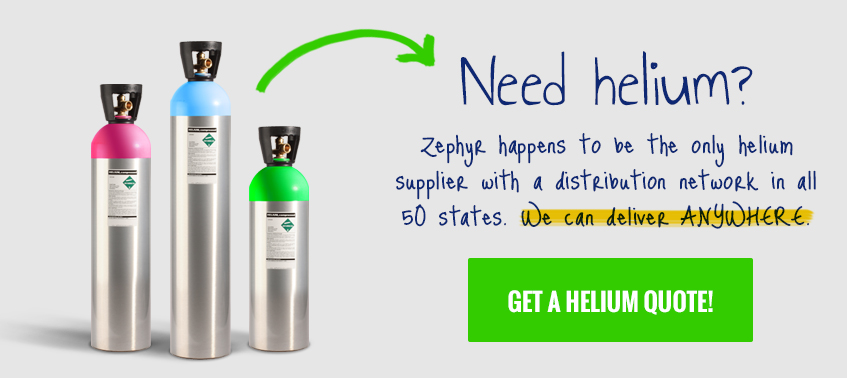Perhaps the most interesting fact in the recorded history of helium is where it was discovered. We didn’t find it on our planet. In fact, it was first discovered over 92,900,000 miles away from Earth.
1868
August 18 of 1868— a full 93 years before the first human went into space, French astronomer Pierre-Jules Janssen spotted an odd yellow line in the spectrum of the sun while studying a total solar eclipse. Astronomer Sir Norman Lockyer understood that this wavelength (587.49) could not have been produced by any known element, and hypothesized a completely unknown element to be the cause.
He named it “helium,” after the Greek god of the sun, Helios.
1895
It took nearly three more decades to identify the existence of helium on our planet. In 1895, hoping to produce argon, Scottish chemist Sir William Ramsay exposed the uranium-laced mineral clevite to mineral acids and collected the resulting gases. Lockyer confirmed that these sampled gases contained traces of helium.
1903
Thirty-five years after it was first discovered on the sun, large reserves of helium were accidentally found in natural gas fields in Kansas, after drillers reported unearthing a gas that refused to burn. Chemists ultimately found that despite the rarity of the element on our planet, there was a massive reserve of helium below the American Great Plains that was available as a byproduct of natural gas. This discovery is what led to the United States becoming the monopoly supplier of helium to the rest of the world.
1925
In 1925, the U.S. government established the National Helium Reserve in Amarillo, Texas to supply military and commercial airships. Two years later, the U.S. would establish the Helium Control Act, placing an embargo on the export of helium in fear that it would be used for military armament. (This ban would turn out to be a major factor in the Hindenburg disaster, because the builder had to resort to using highly-combustible hydrogen gas instead of helium.)
1960
By the 1950s, helium was being used in its liquid state as a coolant for rocket fuel during the great Space Race. At the start of the next decade, five new plants were opened in the United States for the sole purpose of collecting helium from natural gas.
1996
To help alleviate the National Helium Reserve’s $1.4 billion debt, the Helium Privatization Act of 1996 was established to begin the selling off of crude helium to private refiners, until the reserve was emptied. The act also mandated that the National Helium Reserve was to be closed on October 7, 2013.
2000
From the 1990s to the mid-2000s, Algeria rose to become the second largest producer of helium in the world. The National Helium Reserve on the other hand, once a supplier of more than 90% of all of the world’s helium, accounted for just 30% by the end of 2011.
2012
Due to multiple plants going offline for a variety of reasons, and compounded by a huge demand, a severe helium shortage hit in 2012 that left hospitals, manufacturers of MRI machines, semiconductor manufacturers, the balloon industry, and dozens of other industries panicking over the availability and rapidly skyrocketing price of helium.
2013
In an effort to alleviate the helium shortage, the U.S. government approved the Helium Stewardship Act on October 2— just five days before the National Helium Reserve was to be shut down. The new act stated that the reserve would remain operational until 2/3 of the existing helium supply was sold through auctions, which would start in 2015. The remaining 1/3 was to be saved for Federal purposes.
Sources: U.S. Department of the Interior Bureau of Land Management, Jefferson Lab, Popular Mechanics, Decoded Science, Chemical & Engineering News



